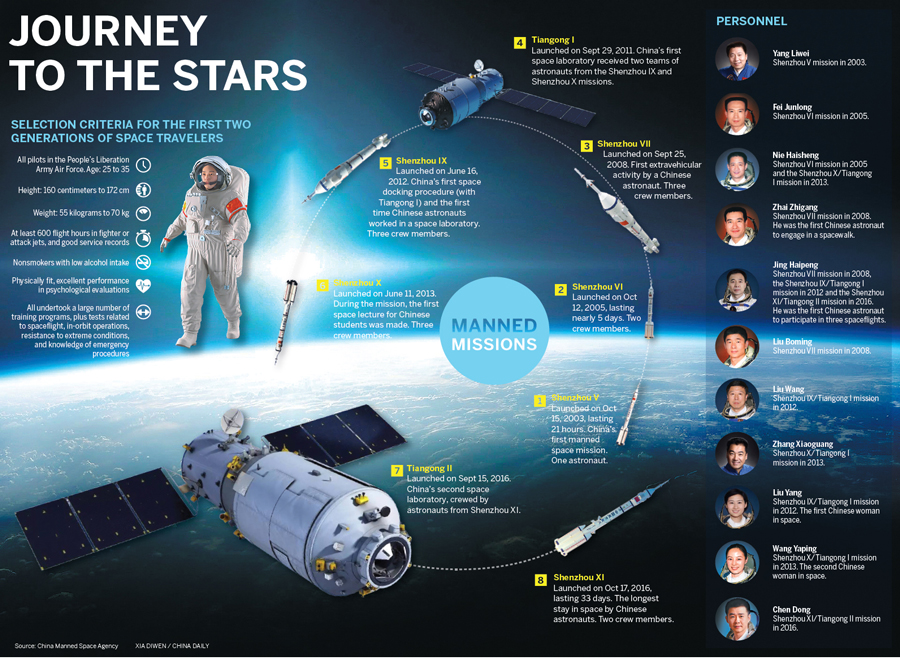China's astronauts prepare for a new era of exploration


The nation is planning its most ambitious project yet; a manned facility that will act as a base for experiments and further exploration, as Zhao Lei reports.
In most suburbs of Beijing, the word "skyrocket" is usually used to describe the soaring price of property that has resulted from China's rapid urbanization and the thriving real estate market.
However, for 16 people in an inconspicuous compound on the northwestern outskirts of the city the adjective is almost always used literally.
They are the only people in a population of 1.3 billion who are active, qualified astronauts. At present, they are training for one of the most spectacular endeavors of the coming decade: building and operating China's first space station. Construction will begin in 2020, and the facility, which will be designed to last at least 10 years, will come into service two years later. Each group of astronauts will occupy it for three to six months at a time.
"Missions to the space station will last much longer than previous assignments. The station's systems will be more advanced and sophisticated than those on the Shenzhou series of spacecraft and the Tiangong space laboratories, so the astronauts will require far greater knowledge, ability and skill," said Fei Junlong, who was sent into space aboard Shenzhou VI in 2005.
"We astronauts must continue to improve our abilities and learn how to operate and maintain the equipment that will be used on the space station," he told reporters during an open house held at the Astronaut Center of China in northwestern Beijing to mark the 20th anniversary of the founding of the People's Liberation Army Astronaut Group.
Nie Haisheng, Fei's partner on the Shenzhou VI mission, explained that China's astronauts now have a wider range of training methods designed to help them become familiar with the advanced equipment that will be used on the space station.
According to the plan of action, a Long March 5B heavy-lift rocket, which is currently under development, will put the station's core module into orbit in 2020. That will be followed by at least four manned missions to carry astronauts into space to assemble the station. In common with previous space missions, the government has not released any figures related to the cost of the project.
If the United States-led International Space Station is retired as planned in 2024, the new, as yet unnamed, Chinese facility will become the only permanent space station.
Although China has trained 21 astronauts over two generations, only 11 of them have taken part in the nation's six manned space missions. The third batch of trainees will be chosen this year.
Candidates for the space station mission will be chosen according to their performance in training and through expert assessment, so no one yet knows who will be the first to board the station.
"We are lucky to be in this great 'New Era'. We must race against time to prepare for the upcoming space station mission," said Liu Boming, who took part in the Shenzhou VII mission in 2008.
A source of pride
In 1992, the Central Committee of the Communist Party of China approved a road map for the country's manned space program drawn up by a number of eminent scientists.
Three years later, the Central Military Commission decided that the astronauts should be chosen from veteran pilots in the PLA Air Force who had at least 600 flight hours in fighter jets or attack aircraft.


















